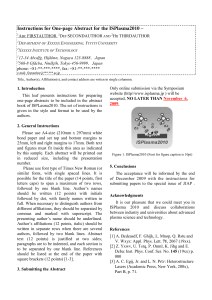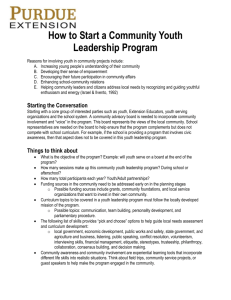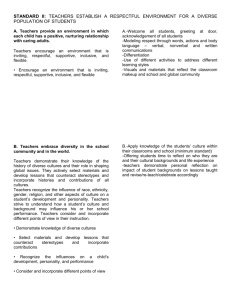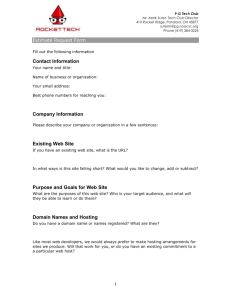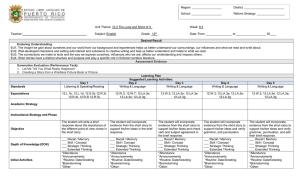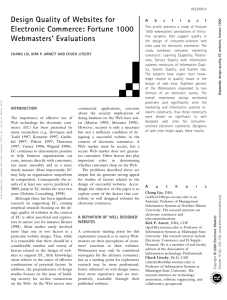Ten Effective Ways to Use a Word Wall in the Secondary Classroom
advertisement
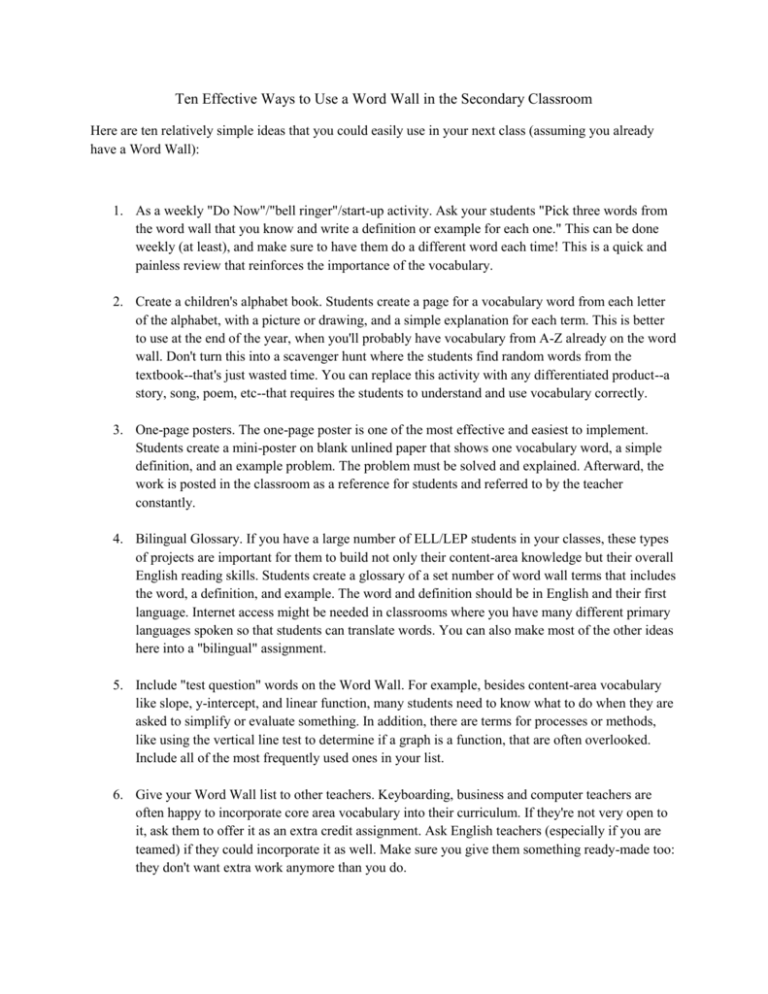
Ten Effective Ways to Use a Word Wall in the Secondary Classroom Here are ten relatively simple ideas that you could easily use in your next class (assuming you already have a Word Wall): 1. As a weekly "Do Now"/"bell ringer"/start-up activity. Ask your students "Pick three words from the word wall that you know and write a definition or example for each one." This can be done weekly (at least), and make sure to have them do a different word each time! This is a quick and painless review that reinforces the importance of the vocabulary. 2. Create a children's alphabet book. Students create a page for a vocabulary word from each letter of the alphabet, with a picture or drawing, and a simple explanation for each term. This is better to use at the end of the year, when you'll probably have vocabulary from A-Z already on the word wall. Don't turn this into a scavenger hunt where the students find random words from the textbook--that's just wasted time. You can replace this activity with any differentiated product--a story, song, poem, etc--that requires the students to understand and use vocabulary correctly. 3. One-page posters. The one-page poster is one of the most effective and easiest to implement. Students create a mini-poster on blank unlined paper that shows one vocabulary word, a simple definition, and an example problem. The problem must be solved and explained. Afterward, the work is posted in the classroom as a reference for students and referred to by the teacher constantly. 4. Bilingual Glossary. If you have a large number of ELL/LEP students in your classes, these types of projects are important for them to build not only their content-area knowledge but their overall English reading skills. Students create a glossary of a set number of word wall terms that includes the word, a definition, and example. The word and definition should be in English and their first language. Internet access might be needed in classrooms where you have many different primary languages spoken so that students can translate words. You can also make most of the other ideas here into a "bilingual" assignment. 5. Include "test question" words on the Word Wall. For example, besides content-area vocabulary like slope, y-intercept, and linear function, many students need to know what to do when they are asked to simplify or evaluate something. In addition, there are terms for processes or methods, like using the vertical line test to determine if a graph is a function, that are often overlooked. Include all of the most frequently used ones in your list. 6. Give your Word Wall list to other teachers. Keyboarding, business and computer teachers are often happy to incorporate core area vocabulary into their curriculum. If they're not very open to it, ask them to offer it as an extra credit assignment. Ask English teachers (especially if you are teamed) if they could incorporate it as well. Make sure you give them something ready-made too: they don't want extra work anymore than you do. 7. Incorporate Word Wall terms into daily assignments, tests and quizzes. This is easy if you use the Sam Houston Student Notebook, but make sure to put some typical vocabulary exercises into your other assignments and quizzes. The easiest way is to do some fill in the blank, short answer, or matching. I use fill in the blank about the previous day's work as a "Do Now" often. If the word is on the wall, they should have it in their notes in their notebooks. Teach students how to utilize flash cards as a study technique. Remember, we must always be modeling good study habits for them. 8. Create a team or grade level Word Wall. Work with your team or across the disciplines of your grade level to have common terms on every word wall. This way, students will see (and hopefully use) the words repeatedly. This requires a bit of coordination and cooperation--like idea #6 above, you'll have to have some ideas that everyone can use quickly and easily use ready to give to reluctant participants. 9. Students create a Crossword Puzzle using Word Wall terms. 10. Use it and refer to it constantly! This is what makes your word wall interactive. Repetition is the key! This means that you should refer to it during your lesson ("What's that word for a graph that's a straight line? It's on the word wall."), update it frequently, and incorporate with one of the ways described above (or come up with your own). It also means that words need to come off the wall periodically--they might be important for one chapter or unit, but not for the big picture. The other side of this is to be judicious in which words you put up there in the first place--you don't want a huge turnover every grading period either.

